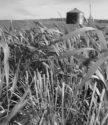Advertise Follow Us
Articles Tagged with ''Montana''
No-Till Makes Long-Distance Farming Work In Big Sky Country
Minimal equipment is a must for far-flung farms, says Montana no-tiller Todd Tibbetts.
Read More
Montana No-Tiller Found Getting ‘Lazy’ Worked
Arnold Gettel first tried no-till in 1969 and has seen soil structure and dryland yields improve as a result.
Read More
Roots Are The Foundation For No-Till Success
Understanding how soil biology relates to nutrient availability can help no-tillers in the long run.
Read More
No-Till Kept His Farm From Blowing Away
Montana producer stops wind erosion and reaps other benefits from no-till.
Read More
More Moisture, More Cropping Acres In Drylands
No-till allowed Montana dryland producer Ben Minow to reduce overhead and increase cropping acres by eliminating summer fallow.
Read More
What I've Learned from No-Tilling
Teaching And Studying Bring New Insights Into The New-Till World
Finding how no-tilling and organic agricultural practices can benefit one another is just one area that deserves a closer look.
Read More
No-Till “Shines” When The Sun Swipes Valuable Moisture
Moisture conservation may be the key to reducing disease since moisture-stressed wheat is more susceptible to infection.
Read More











